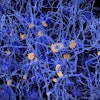Dear AuntMinnie Member,
Investigators in India are struggling to understand what led to the death of a man who was killed when he carried an oxygen cylinder into an MRI suite over the weekend.
The man, Rajesh Maru, was accompanying a relative who was getting scanned, and he was allegedly told by hospital personnel to carry the cylinder into the MRI suite. Early reports indicate that the scanner's powerful magnetic field sucked the tank and Mr. Maru into the room, in the process damaging the cylinder. Mr. Maru died after inhaling oxygen from the leaking tank, according to reports of the incident.
Investigators are focusing on the training received by the personnel who were assisting with the scan, with some reports indicating that these staffers were not from the radiology department and may not have been trained in MRI safety techniques. Learn more about this tragic incident by clicking here.
MRI volume drops
MRI procedure volume fell in 2017 in the U.S. for the first time in decades as the market undergoes a seismic shift from independent centers to hospital-based facilities, according to a new report by IMV Medical Information Division.
The new report shows that procedure volume declined 8% last year, but that's not the entire story. Scans fell an astonishing 20% at independent imaging centers, while they grew 9% at hospital-based imaging facilities. The shift is most likely due to reimbursement changes that favor imaging in the hospital setting.
The change is prompting many hospitals to consider new scanner purchases to meet growing demand, especially as systems installed during the last market peak more than a decade ago reach replacement age. Learn more by clicking here, or visit our MRI Community at mri.auntminnie.com.
Nuclear medicine and cataracts
Are nuclear medicine technologists at higher risk of cataracts? That's the disturbing implication of a new study we're featuring in our Molecular Imaging Community.
Researchers from the U.S. and France analyzed the rate of cataracts among nuclear medicine technologists and compared it with the rate in those who never performed the studies. They found an 8% higher risk of cataracts among those who performed the exams.
Learn more about the study by clicking here, or visit our Molecular Imaging Community at molecular.auntminnie.com.
Disclosure: AuntMinnie.com is a subsidiary of IMV Ltd.


.fFmgij6Hin.png?auto=compress%2Cformat&fit=crop&h=100&q=70&w=100)





.fFmgij6Hin.png?auto=compress%2Cformat&fit=crop&h=167&q=70&w=250)











